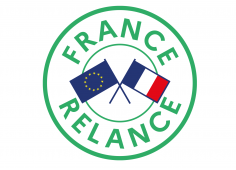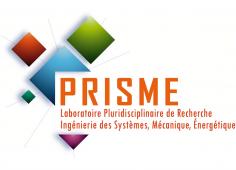Specific development of hydrogen combustion dedicated engines
| This project is part of the territorial unit of the R&D Auvergne Rhône Alpes recovery plan | |
| Duration ► | 24 months |
| Start ► | January 2022 |
Context
On July 14, 2021, the European Commission adopted a set of voluntary and ambitious proposals in order to adapt the Union's policy, particularly in the field of climate, energy, agriculture and transport, in order to reduce its greenhouse gas emissions by 55% by 2030 compared to 1990 emissions and to achieve climate neutrality by 2050. This roadmap called "FIT for 55" envisages reducing average greenhouse gas emissions of private vehicles and light commercial vehicles by 55% from 2030 and 100% from 2035 compared to 2021 levels. Thus only electric vehicles or vehicles using hydrogen can be marketed. To assume the supply, the distribution network will be reinforced in particular thanks to charging stations of at least 300kW every 60 km and Hydrogen refueling station and every 150 km in each urban node by 2030.
Green hydrogen is therefore one of the solutions adopted to meet these ambitious objectives and can be converted into electricity using a fuel cell or into mechanical energy if the hydrogen is used in an internal combustion engine. Thus in a context of transport, industry and energy production (generator), the optimal valorization of hydrogen must be privileged while controlling the cost of investment and operation of the Energy converter (battery with fuel or internal combustion engine).
Thus, taking into account performance, investment (CAPEX) and operating cost (OPEX), the internal combustion engine running on hydrogen is an elegant solution to meet future environmental challenges.
Objectives
The Clean ICE project aims to develop and validate engines dedicated to hydrogen combustion while taking into account the specific uses of the transport modes.
Using a numerical approach followed by an appropriate design, engine prototypes will be designed and then validated by engine tests. The numerical approach will optimize the air loop in order to maximize the air filling of the engine. Indeed, in order to limit NOx emissions and the appearance of knocking, operation at very low richness of the mixture is necessary but imposes a substantial intake of air. Thanks to Pipo Moteurs design office, engine designs will be designed and then validated by 3D calculations. In particular, combustion chamber geometries and injection strategies will be calculated in order to optimize the preparation of the hydrogen-air mixture in order to reduce NOx emissions and the appearance of knocking.
This numerical approach will be supplemented by an experimental approach carried out on an engine bench in order to confirm the performance in terms of emissions and efficiency of the engines.
Partners
The Clean ICE project is not part of a project continuity but initiates the collaboration necessary for the accelerated deployment of hydrogen combustion technology.
Work plan
The project will be carried out at Pipo Moteurs for a period of 24 months from January 1, 2022. The additional resources will be those of the PRISME laboratory. Remote monitoring of the University of Orleans will be provided and meetings on the industrial site will be scheduled periodically. Finally, short-term stays at the University of Orleans, but also with industrial partners, will be scheduled.
The work will begin with the air loop dimensioning by an engine 0D/1D modeling. This dimensioning will make it possible to define the intake manifolds design and the turbocharger choice with regard to the engine filling constraints linked to the hydrogen combustion (very high excess of air). Then the combustion chambers geometry optimization will be carried out by a CFD study under Converge in order to optimize the internal aerodynamics and the mixture preparation with regard to the injector position and its characteristics as well as the internal aerodynamics. Finally, after having produced the prototypes, the engine performance will be determined and adapted according to the mobility applications.
The digital tasks will be carried out within the PRISME laboratory. They will rely in particular on the Centre Val de Loire Region computing center. The design, manufacture and development of the prototypes will be carried out within Pipo Moteurs. The PRISME laboratory will provide its expertise for combustion analysis. The possible use of a single-cylinder PRISME search engine will make it possible to carry out studies in advance of the phase and to validate the concepts proposed by the numerical task.
Expected Results
To achieve these objectives, the project will adopt a digital approach aiming at:
- Perform 0D/1D modeling under Amesim and 3D under Converge software in order to define new combustion chamber concepts and new Hydrogen injection strategies.
- Define methodologies to optimize the influential parameters of engine control and calibration to meet performance and NOx emission objectives.
- Carry out and analyze the tests necessary to understand the combustion of Hydrogen and its optimization, including specific tests to improve methodologies
- Adapt calibration techniques in order to improve the relevance of known methods on gasoline engines, in particular by improving the Amesim digital code developed by Siemens.
This numerical approach will be completed by an experimental approach carried out on a single-cylinder engine. The combustion chambers design will be tested experimentally and will validate the reduction in NOx emissions and the appearance of knocking.
Valorisation
The study is fully in line with the objectives of supporting the transition to low-carbon technologies. It also aims to maintain employment on the national territory thanks to a diversification of the product offer of the company Pipo Moteurs, in particular to open up to new markets which are the maritime and light aeronautics.
By deploying technologies allowing the rational use of hydrogen, the Clean ICE project will meet the objective of significantly reducing CO2 emissions in the field of transport.
Contact : Fabrice FOUCHER ⇒ fabrice.foucher@univ-orleans.fr



